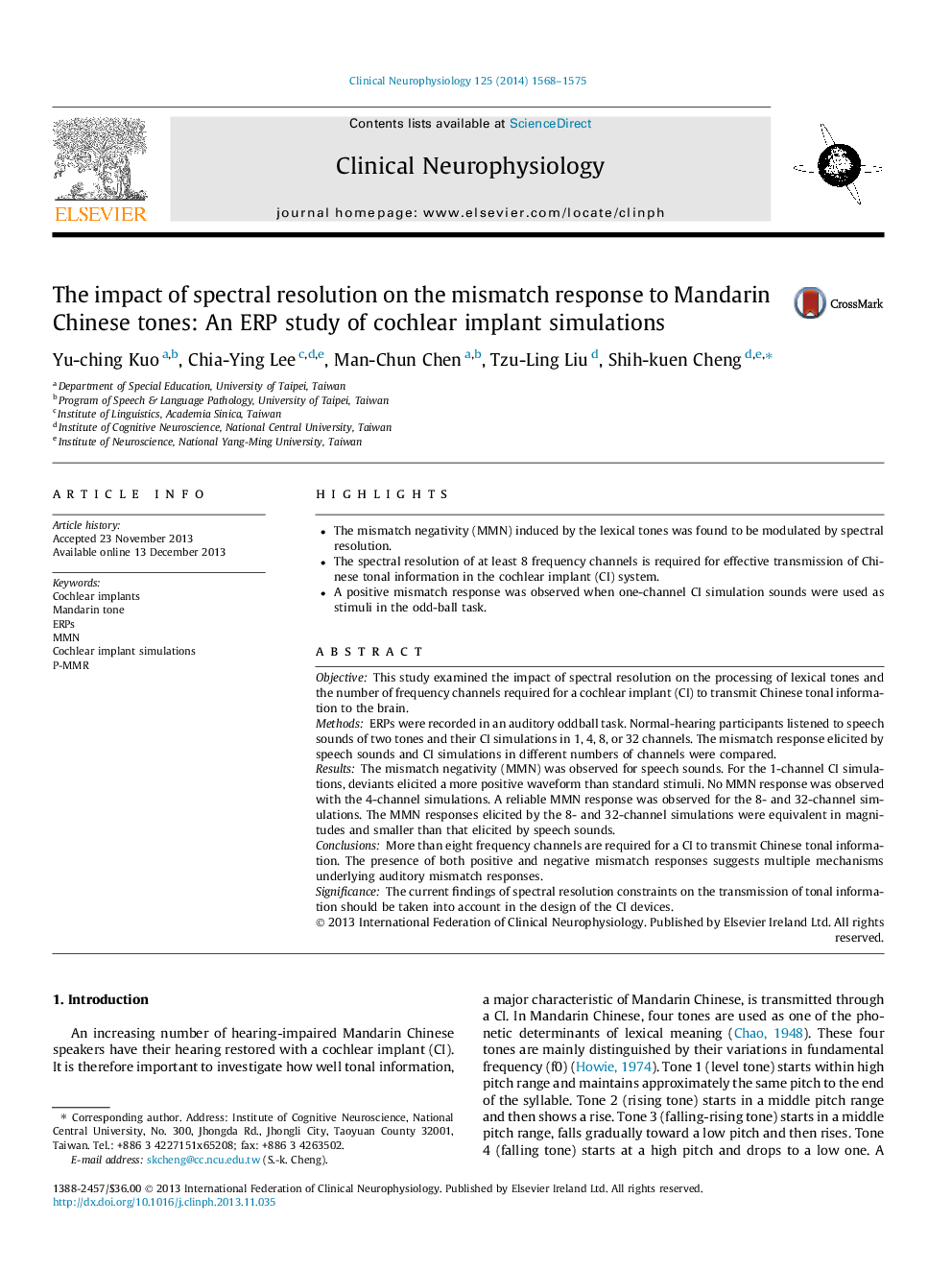| Article ID | Journal | Published Year | Pages | File Type |
|---|---|---|---|---|
| 3043484 | Clinical Neurophysiology | 2014 | 8 Pages |
•The mismatch negativity (MMN) induced by the lexical tones was found to be modulated by spectral resolution.•The spectral resolution of at least 8 frequency channels is required for effective transmission of Chinese tonal information in the cochlear implant (CI) system.•A positive mismatch response was observed when one-channel CI simulation sounds were used as stimuli in the odd-ball task.
ObjectiveThis study examined the impact of spectral resolution on the processing of lexical tones and the number of frequency channels required for a cochlear implant (CI) to transmit Chinese tonal information to the brain.MethodsERPs were recorded in an auditory oddball task. Normal-hearing participants listened to speech sounds of two tones and their CI simulations in 1, 4, 8, or 32 channels. The mismatch response elicited by speech sounds and CI simulations in different numbers of channels were compared.ResultsThe mismatch negativity (MMN) was observed for speech sounds. For the 1-channel CI simulations, deviants elicited a more positive waveform than standard stimuli. No MMN response was observed with the 4-channel simulations. A reliable MMN response was observed for the 8- and 32-channel simulations. The MMN responses elicited by the 8- and 32-channel simulations were equivalent in magnitudes and smaller than that elicited by speech sounds.ConclusionsMore than eight frequency channels are required for a CI to transmit Chinese tonal information. The presence of both positive and negative mismatch responses suggests multiple mechanisms underlying auditory mismatch responses.SignificanceThe current findings of spectral resolution constraints on the transmission of tonal information should be taken into account in the design of the CI devices.
